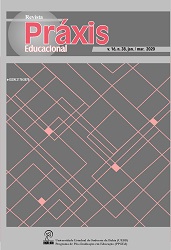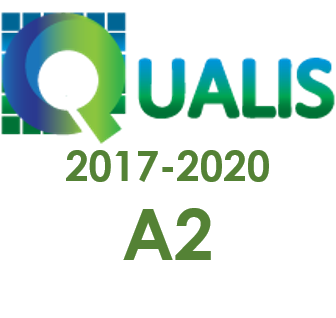BLENDED LEARNING, INNOVATIVE PATTERN IN TEACHERS PROFESSIONAL DEVELOPMENT IN EDUCATIONAL SYSTEM OF IRAN
DOI:
https://doi.org/10.22481/praxisedu.v16i38.6010Keywords:
ICT, E-Learning, Blended Learning, Teacher Professional DevelopmentAbstract
ICT development and application of new instruments and concepts through online communication, provides unmatched opportunity for rapid exchange of information and social interactions for learners and causes expansion of information, easy, fast and low cost access. Education institution as custodian of the education and training can be responsible for the production of knowledge and efficiency in the education process, thereby increasing the knowledge of learners and teachers. So this study aims to combine E-learning with traditional learning and to provide blended learning in teachers’ professional development. Since the most important mission of education, is capable and efficient human resources training, it is recommended to use the previous studies and experiences and by relying on culture and indigenous sources, should answer this question whether the blended learning can be used as an innovative pattern in teachers’ professional development in educational system of Iran. To answer this question, the present research was carried out with descriptive-analytical method. Now with the use of modern information and communication technology,in addition to online virtual tutorials simultaneously or non-simultaneously, a new type of training, namely Blended Learning, is formed which is combined to traditional classrooms and refers to the territory where traditional and electronic learning is used both for training the learners. Using the Internet and multimedia systems, a variety of tools can be provided to improve the quality of learning and also quick and easy access to information resources and with face to face activities can be prepared interaction element in training. Thus, with the help of technologies and digital media and designing learner-centered curriculum, designing affair, teaching, learning, assessment and evaluation in the electronic learning environment will be optimized. One of the educational systems’ necessities in the information era, is cultivation wise and thoughtful teachers in teacher training institutions who are competent in solving modern problems of education and innovating creative solutions. Top of form for this purpose, blended learning (network-based) through new training methods, provides the necessary foundation for improvement the quality of education and training sophisticated teachers and provides effective way to achieve the prominent goals of education. Blended instruction, have changed educational opportunities and the practical tools are available to teachers and instructional designers as well.
Downloads
Metrics
References
Horton, William (2006). E-learning by Design. San Francisco: John Wiley & Sons, Inc. / Pfeiffer.
Jackson, M. J., Helms, M. M. (2008). Student perceptions of hybrid courses: Measuring and interpreting quality. Journal of Education for Business, 84 (1), 7–12.
Lynch, Maggie Mc Vay (2002). The Online Educator: A Guide to Creating the Virtual Classroom. London: Routledge.
Littlejohn, Allison, Pegler, Chris (2007). Preparing for Blended E-learning. New York: Routledge.
Macdonald, Janet (2006). Blended Learning and Online Tutoring: A Good Practice Guide. U.S.: Gower.
Naidu, Som (2003). E-learning: A Guidebook of Principles, Procedures and Practices. New Delhi: Commonwealth Educational Media Center for Asia.
Noroozi, Daryoosh, Razavi, Seyyed Abbas (2014). Educational design basics. Tehran: Samt.
Pozzi, F., Manca, S., Persico, D., & Sarti, L. (2007). A General Framework for Tracking and Analyzing Learning Processes in Computer-supported Collaborative Learning Environments. Innovations in Education and Teaching International, 44 (2), 169-179.
Seraji, Farhad, Attaran, Mohammad (2011). E-learning: Basics, Design, Implementation and Evaluation. Hamedan: Bu Ali Sina University.
Wang, Haomin (2008). A Pragmatic Framework for Promoting Interactivity in E-Learning. In Zheng, Robert and Ferris, Sharmila Pixy (Eds.). Understanding Online Instructional Modeling: Theories and Practices. U.S.: Information Science Reference.
Downloads
Published
How to Cite
Issue
Section
License
You are free to:
Share - copy and redistribute the material in any medium or format; Adapt - remix, transform, and build from the material for any purpose, even commercially. This license is acceptable for Free Cultural Works. The licensor cannot revoke these freedoms as long as you follow the terms of the license.
Under the following terms:
Attribution - You must appropriately give credit, provide a link to the license, and indicate if any changes have been made. You may do so in any reasonable way, but not in a way that suggests that you or your use is endorsed by the licensor.
There are no additional restrictions - You cannot apply legal terms or technological measures that legally restrict others to make any use permitted by the license.










